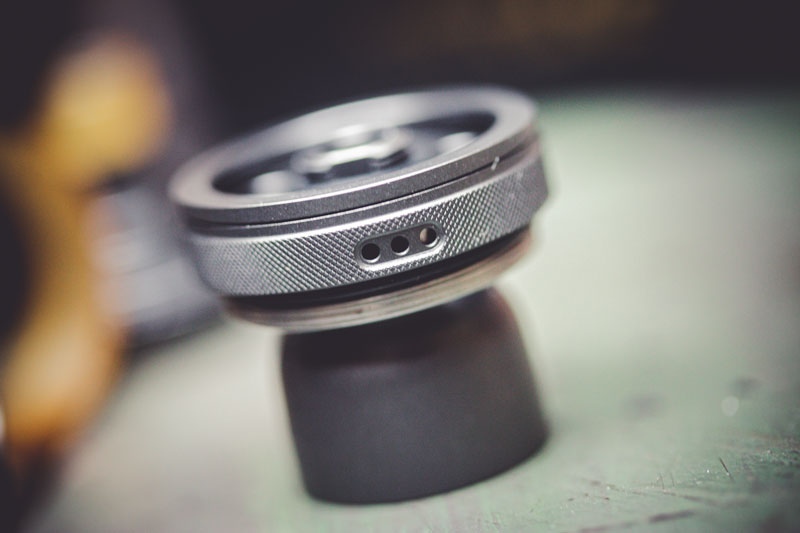
Vape Fact #4: What's Inside an Atomizer ?
In part 2, I listed and introduced to you the types of burners and today we will learn together in detail what parts are inside a burner.
The burner, as I said in the previous section, is an important part as well as the final step to decide the deliciousness, flavor, amount of smoke, etc. So what are the reasons for us to know which burner - atomizer will meet the above criteria or is suitable for us, suitable for the essential oil bottle we are using.
In my experience, the first two things I always pay attention to and evaluate to see if the burner is good or suitable for me are deck build and air flow.
Deck Build

Deck build - or coil chamber, is the first part I always pay attention to in any type of Atomizer, as I said that deck build usually has 2 main types: single coil and dual coil. If you are someone who likes a lot of smoke, smoke goes straight into your mouth, you should choose the Dual Coil deck build, but if you are someone who likes the richness, blending the flavor more completely, you should choose the Atomizer with Single Coil deck.
In addition, in the Deck Build, there is another thing that I pay attention to, which is the Post Build. The Post Build plays a decisive role in the position where the Coil will be placed in the Deck Build because the position of the Coil is also very important when you start Building the Coil into the burner. In the Vape world at the present time, there are also many manufacturers that have made many types of Atomizers with many different types of Post Build to increase the experience in terms of flavor as well as help Builders gain more skills and experience when Building Coil.
Air Flow

Also known as air holes, air paths. With the purpose of taking air straight into the combustion chamber, the amount of air passing through the coil after being heated will create smoke. There are many types and ways to position Air Flow depending on the design of the manufacturers, and are usually divided into 3 main types: Top, Middle and Bottom.
Most units have an adjustable Air flow Ring on the tank that allows you to manually change the airflow - multiple holes and few holes.
The speed of the airflow affects the cooling effect, which also affects the overall taste of the vapour.
The larger the airflow, the cooler the draw and the more vapor you get. When you crank the airflow up to its maximum capacity, you will generally experience a smoother, cooler draw with less overall flavor.
Overall, if your goal in vaping is a strong flavor, then I recommend using atomizers with low airflow. On the other hand, if you are a fan of a lot of vapor, then you should use atomizers with high airflow. The great part about air flow units is that they are completely customizable. You can customize your airflow differently, depending on your preferences and the feel of the draw.
Chimney, Chamber, Cap
Next are the 3 parts Chimney, Chamber and Cap. For Chimney, Chamber, these are 2 special parts that appear mainly in RTA burners. As for Cap, this is a part that is often found in RDA and RDTA burners.
Chamber
First of all, with the chamber, this is a part that covers the entire Deck Build including coil and cotton, to separate the essential oil of an RTA chamber between the glass shell and the Deck Build, allowing the essential oil to only go straight into the cotton base of the Deck Build without having to contact the entire coil and cotton, made of heat-resistant plastic or metal.
Chimney
It is the “chimney” part and is also made of metal or heat-resistant plastic, which directs the vapor flow when inhaled from the heated coil straight to the driptip and our mouth.
Cap
It is a combination of Chimney and Chamber, instead of keeping the essential oil outside like RTA, it helps keep the essential oil inside the Deck build and protects the coil and cotton from impact, and on the Cap is usually combined with Air flow Ring to help adjust the amount of air directed straight to the coil.

















